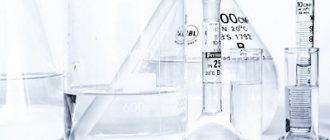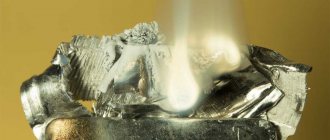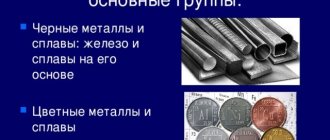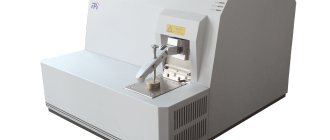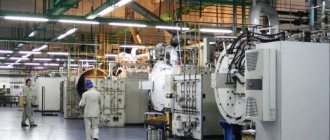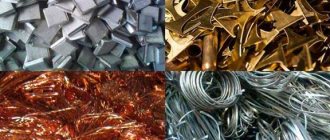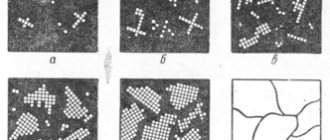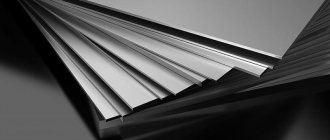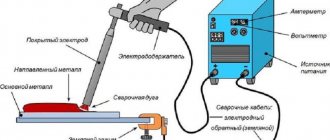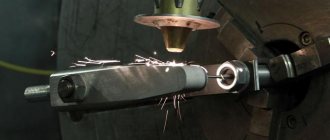Purpose
Chemical analysis allows:
- determine the quantitative composition;
- examine the sample for the presence of impurities and determine their concentration;
- identify the alloy;
- find out the ratio of alloy impurities for its marking.
The research is necessary for:
- examination of products to determine compliance with current standards;
- continuous monitoring of the technological process;
- incoming control of raw materials;
- development and creation of new alloys;
- product certification;
- inspection of pure metals.
Favorable conditions for purchasing popular equipment for metal analysis
Our company sells modern equipment for analyzing the composition of metals, which can be used in various industries.
All devices are highly accurate, easy to transport, and can be used for a long time without loss of technical characteristics. The cost of spectrometers and other equipment for research corresponds to their high quality, reliability and functionality, and is distinguished by loyalty. Source
Methods of atomic emission spectral analysis
Atomic emission spectral analysis (AESA) of metals and alloys has become most widespread in various industries. With its help, you can examine substances in various states of aggregation for the presence of many chemical elements. It has a low detection limit of elements, is simple and low-cost, which makes it advisable to use it in laboratories for the spectral analysis of metals that solve various analytical problems.
The emission spectrum of a sample is recorded using a spectrograph, spectroscope or spectrometer. On this basis, all methods of conducting AESA are divided into the following three groups, each of which has its own specifics.
Spectrographic
It is carried out using a spectrograph, which allows you to obtain reliable results relatively quickly. The method involves recording atomic spectra on a photographic plate and then identifying them using a tablet or a spectroprojector.
Advantages:
- objectivity;
- documentary.
Flaws:
- labor intensity;
- low efficiency.
Spectrometric
To study the sample, instruments with photoelectric recording of the spectrum are used. This type of chemical analysis of metals and alloys is an objective method and allows you to quickly obtain information.
Advantages:
- expressiveness;
- high accuracy of results;
- complete automation of the process;
- processing of results on a computer and archiving them.
Flaws:
- complexity of equipment operation;
- the occurrence of problems of optical and electrical stability;
- it is impossible to simultaneously record a wide range of the spectrum.
Visual
It differs from the previous two in subjectivity, since the human eye serves as a radiation receiver. Despite its limited capabilities, visual spectral analysis is widely used in industry. The visual method acquires particular importance when it is necessary to control the chemical composition of alloy steels during their production.
Advantages:
- expressiveness;
- simplicity;
- carrying out analysis at the location of the samples;
- low cost of equipment.
Flaws:
- low accuracy of results;
- does not allow the determination of non-metallic elements.
Methods for studying the chemical composition of steel
The analysis of the chemical composition of steel is carried out not in the entire mass of steel being smelted, but in test materials taken separately for research. During the next melting, a sample is taken, from which the characteristics for the rest of the batch are determined. Based on this, documentation is drawn up confirming the chemical composition of the steel.
The samples taken are poured into special cast iron glasses, where the steel hardens. After this, it is drilled in the middle or planed to obtain steel filings, with which the composition analysis procedure is carried out. When drilling, do not use files, the rebound particles of which can affect the composition of the resulting material. The results of such a study are recorded in a certificate issued for the steel of a given heat.
The main difficulty of the procedure is that steel in liquid and solid form differs in composition. Therefore, it is important to observe one condition: the transition from a liquid to a solid state must be very fast. In this case, the research results will be reliable.
Modern methods of chemical analysis are emission and x-ray fluorescence. Emission spectrometers are special instruments that determine the quantitative composition of elements in steel. The permissible error of such studies is reduced to a minimum. Another method uses an X-ray tube that reacts to energetic photons from each metal. These modern methods are simple, accurate and do not require careful and complex sample preparation.
The purpose of the study is to determine the chemical elements that make up steel and their percentage relationship to each other. To determine the content of each of them, separate procedures are used, during which the composition of the steel of a particular melt is determined.
Researchers experimentally obtain information about the content of carbon, sulfur, manganese, silicon, nickel, phosphorus, chromium, aluminum, tungsten, and molybdenum in a steel sample.
The analysis of the chemical composition of steel is carried out not in the entire mass of steel being smelted, but in test materials taken separately for research. During the next melting, a sample is taken, from which the characteristics for the rest of the batch are determined. Based on this, documentation is drawn up confirming the chemical composition of the steel.
The samples taken are poured into special cast iron glasses, where the steel hardens. After this, it is drilled in the middle or planed to obtain steel filings, with which the composition analysis procedure is carried out. When drilling, do not use files, the rebound particles of which can affect the composition of the resulting material. The results of such a study are recorded in a certificate issued for the steel of a given heat.
The main difficulty of the procedure is that steel in liquid and solid form differs in composition. Therefore, it is important to observe one condition: the transition from a liquid to a solid state must be very fast. In this case, the research results will be reliable.
Modern methods of chemical analysis are emission and x-ray fluorescence. Emission spectrometers are special instruments that determine the quantitative composition of elements in steel. The permissible error of such studies is reduced to a minimum. Another method uses an X-ray tube that reacts to energetic photons from each metal. These modern methods are simple, accurate and do not require careful and complex sample preparation.
The purpose of the study is to determine the chemical elements that make up steel and their percentage relationship to each other. To determine the content of each of them, separate procedures are used, during which the composition of the steel of a particular melt is determined.
Researchers experimentally obtain information about the content of carbon, sulfur, manganese, silicon, nickel, phosphorus, chromium, aluminum, tungsten, and molybdenum in a steel sample.
Analyzers of metals and alloys: prices, types, principle of operation
Rapid and accurate determination of the type of metal or alloy composition is required in many industries. But such analysis is especially in demand when working with recycled metal materials.
After all, even an experienced receiver or search engine cannot determine the exact composition and quality indicators by eye.
In order to quickly determine the composition of the alloy and its true value, a metal analyzer is used. Another name for this device is spectrometer .
Thanks to this device, you can accurately determine whether it is copper or an alloy that contains a large percentage of copper. You can also find out the exact amount of nickel in stainless steel. And all this without destroying the object - there is no need to saw the scrap or extract sparks from it.
The device is useful for those who work with scrap ferrous and non-ferrous metals. Using an analyzer, you can also determine the presence of heavy metals in the alloy, which is important for safety and compliance with laws.
Read more about licensing the delivery and acceptance of non-ferrous metals in this article, and for ferrous metals - here.
Operating principle of the metal composition analyzer
The first to appear was an analyzer of metals and alloys, which operated on the basis of X-ray fluorescence spectrometry. Subsequently, devices appeared that used laser-induced spectrometry.
Despite this, more than 5,000 X-ray analyzers for sorting scrap metal and positive identification of materials are still sold annually around the world. Laser devices can be used either separately or as a complement to XRF devices when analyzing alloys. These analyzers are especially needed when working with alloys with low atomic number or light elements such as beryllium, lithium, magnesium, aluminum and silicon.
X-ray fluorescence metal analyzer
A spectral analyzer of metals or XRF is characterized by high accuracy in determining their composition.
The operating principle of these devices is based on the energy-dispersive method, in which radiation created by a miniature X-ray tube hits the surface of the sample and causes ionization of the inner shell of the atoms that make up the sample. The resulting voids in the inner shell of the atom are filled with electrons from higher shells, and thus element-specific photons are emitted and detected by a silicon detector.
XRF can operate simultaneously to identify elements from titanium to lead within seconds. When necessary, a second beam condition is used to detect light elements, resulting in longer measurements, typically 10 to 60 seconds.
Laser metal analyzers
LAMs use optical emission spectrometry, but unlike spark optical emission spectrometry, this emission follows laser-induced plasma generation. The laser pulse hits the surface of the sample and removes an amount of material in the 1 nanogram range, generating a plasma plume (partially ionized gas) in the temperature range from 5 to 20 thousand Kelvin (K). The laser energy is low, but it is focused on a microscopic point in the sample to generate plasma.
In typical portable laser analyzer systems, the dispersive power of the spectrometer is often limited by its size, so their capabilities must be complemented by other devices. Multiple spectrometers may be required to cover the entire spectral range from 180 to 800 nanometers (nm). In addition, wavelengths less than 200 nm (e.g. carbon, 193.09 nm or sulfur, 180.73 nm) are strongly absorbed by air and require argon purging of the optical path.
LAM can detect almost any element commonly found in metals. Features of these analyzers:
- Very high sensitivity to alkali (lithium, sodium, etc.) and alkaline earth metals (beryllium, magnesium, etc.);
- Good sensitivity to transition metals, with the exception of refractory elements (such as niobium, molybdenum, tungsten or tantalum), which are difficult to detect;
- Sensitivity to carbon, phosphorus and sulfur is usually insufficient for the analysis of these elements in alloys.
Despite the introduction of advanced laser technologies, for heavier alloys such as super alloys, copper alloys (except aluminum and beryllium bronze), solders, lead alloys or precious metal alloys, XRF provides better sensitivity and analysis accuracy than laser devices. Therefore, it is better suited as an analyzer of precious metals.
In addition, measuring elements in waste can be difficult for LAM. For example, detection of lead and tin in stainless steel alloys at low concentrations will be difficult when using laser analyzers.
How to save money
Not everyone who works in the field of metal recyclables has enough money to purchase this expensive equipment. It happens that the collection point has only recently opened, and the owner does not yet have free funds to purchase an analyzer.
Rent
It is not profitable to rent a metal analyzer for a long time. On thematic forums, participants indicate that you can rent a device for $150-300 per day. This option is only advisable if you need to check a large batch of metal once . Renting is a good option if you need to carry out an audit .
Search engines rent analyzers if, for example, they have discovered an untouched scrap metal dump that has not yet been found and want to estimate how much they will earn from it.
Buying used
An inexpensive option for both receivers and search engines.
In private advertisements you can find both relatively new and outdated models. You can buy a metal and alloy analyzer, the price for a used model will be approximately $8,700.
As an example, we can consider the Innov-X Alpha-2000, produced in 2008. Other models are available for a similar price.
Buying used analyzers has a number of disadvantages and possible negative consequences .
Firstly, no one gives them a standard one-year warranty.
Secondly, you do not know the service life of the X-ray tube (if it is an X-ray fluorescence metal analyzer). The device may have faults that the seller will hide from the buyer.
The device costs as much as a middle-class car, so you can be deceived, because it is not known under what conditions it was stored and used. If this is not done correctly, there is a high risk that the detector in the device is damaged. Replacing it is expensive and will negate any savings from purchasing a used device.
Alternative option - laboratory
If the batch of metal that enters the collection point or is found by a search engine is homogeneous, you can use laboratories at metallurgical plants and research institutes. Usually one such examination costs about 500 rubles . You should look for such laboratories nearby.
Popular models and their costs
Prices may differ from those that the buyer will receive in personal contact with the seller, since they do not like to advertise the cost of their goods.
Stationary
Only suitable for large scrap metal collection sites that receive a large amount of homogeneous metal at a time.
Metal analyzer M5000 . Despite the fact that it is stationary, its dimensions are compact and it can fit on a table. It is used more in production, including secondary metallurgy. Experts and market participants speak of the M5000 as a device that optimally combines price and quality.
Main manufacturers
Olympus Corporation
A Japanese company known for its products in the field of optics and photographic equipment. Its metal analyzers are popular because they are considered reliable in Japanese and are in the middle price segment.
The company invests money in scientific and technical development and software improvement. Delta X-act Count technology has been created for portable analyzers, thanks to which the speed and detection limits have decreased.
FPI (Focused Photonics Inc)
A Chinese company founded by graduates of prestigious American universities. It is considered one of the leaders in the production of all kinds of systems for monitoring the ecology of the environment. Their metal analyzers are also in demand.
The FPI portable metal analyzer is slightly cheaper than its main competitors.
Bruker
German company founded more than 50 years ago. Production, laboratories and representative offices are located in 90 countries. It consists of four divisions that deal with different areas. The development and production of metal analysis systems is carried out by Bruker AXS and Bruker Daltonics.
They are considered to be of high quality and are quite common in the Russian market due to the good work of their representative offices.
There are also a number of domestic organizations that are engaged in the development and production of analyzers. Usually, the capabilities of their products are quite sufficient for working with scrap non-ferrous and ferrous metals, and the devices are noticeably cheaper .
You need to look for them depending on your location.
Principle and advantages
The principle of operation of portable devices is the same as in stationary ones. Stationary ones take up a lot of space and require special handling skills. Learning to work with portable ones is easier. Such devices weigh on average 1.5–2 kg, the battery lasts for several hours.
They have
a liquid crystal display , which displays information about the composition in the form of symbols used in chemistry.
The device has the ability to accumulate and store information , including test results and photographs.
Accuracy – 0.1%, which is absolutely enough for work in the recycling industry.
Here's what you can check with a portable analyzer:
- Large size structures.
- Structures of complex shape.
- Ingots.
- Small parts.
- Pipes.
- Rods.
- Blanks.
- Electrodes.
- Chips and metal dust.
